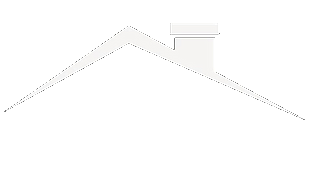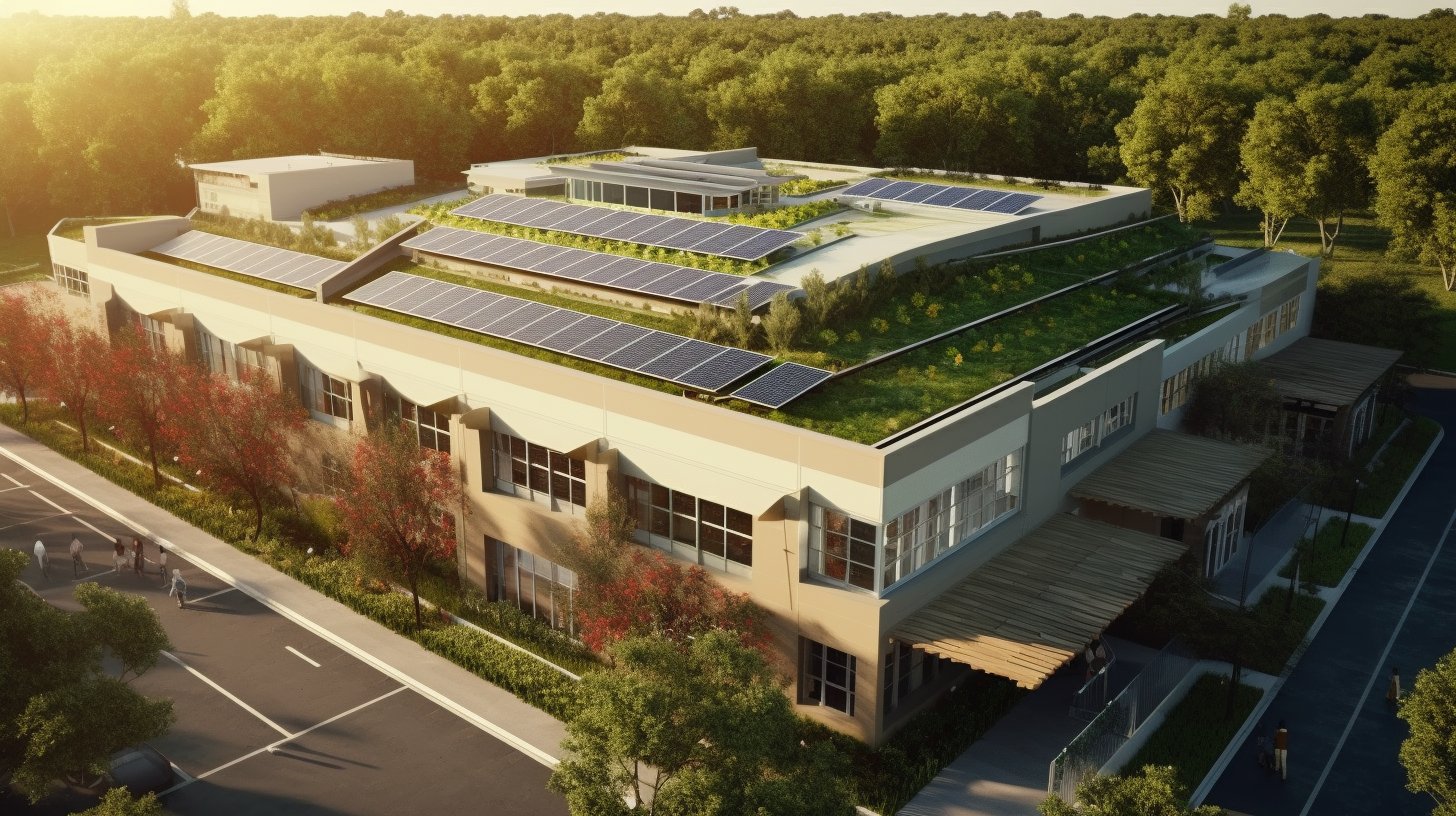Are you looking for ways to make your school more sustainable without sacrificing comfort for your students and staff? One of the most effective ways to reduce your school’s carbon footprint is by installing energy-efficient roofing options.
Not only can they significantly reduce your energy bills, but they can also improve the indoor comfort of your building. In this article, we will explore some of the most popular energy-efficient roofing options for educational buildings and help you choose the right solution for your school.
Sustainable practices in schools are becoming increasingly important as climate change becomes a more pressing concern. Energy-efficient roofing options are a simple yet effective way to reduce your school’s carbon emissions and contribute to a more sustainable future.
By choosing the right roofing option, you can significantly reduce your school’s energy consumption and make your building more comfortable for students and staff. In the following paragraphs, we will discuss some of the most popular energy-efficient roofing options for educational buildings, including cool roofs, green roofs, and solar panels.
The Importance of Sustainable Practices in Schools
You might think that sustainable practices in schools are expensive and time-consuming, but in reality, they can save money and benefit the environment in the long run. Implementing change may seem daunting, but it’s essential to start making changes now to ensure a better future for the next generation.
One way to get started is by involving students in the sustainability efforts. By educating and empowering students to take responsibility for their environment, they become more invested in the school’s sustainability goals.
The benefits of sustainable practices in schools extend beyond the environment. By reducing energy and water usage, schools can save money on utility bills. For instance, simple changes like turning off lights and unplugging electronics when not in use can reduce energy bills significantly.
Additionally, schools can receive recognition for their efforts through various sustainability certifications, which can lead to increased funding and community support.
Now, let’s dive into one of the most effective sustainable roofing options for educational buildings: cool roofs.
Cool Roofs
If you’re looking for a sustainable roofing solution for your educational building, cool roofs should be on your radar. These roofs are designed to reflect sunlight and reduce heat absorption, which can help lower cooling costs and improve overall energy efficiency.
Cool roofs work by using reflective materials, such as white coatings or tiles, which reflect sunlight and reduce the amount of heat that’s absorbed by the roof. Some popular materials for cool roofs include white coatings, tiles made from ceramic or concrete, and metal roofs with a reflective coating.
Benefits of Cool Roofs
Imagine walking into a classroom with a cool roof on a scorching hot day, feeling the relief of cooler air and knowing that the roof is also helping to reduce energy costs and carbon emissions. Cool roofs are designed to reflect sunlight and absorb less heat than traditional roofs, which reduces the amount of heat transferred to the building. This can result in significant energy savings for schools, especially in warm climates where air conditioning is necessary. In addition to energy savings, cool roofs also have a positive climate impact by reducing the amount of heat absorbed by the building and surrounding environment.
To better understand the benefits of cool roofs, consider the following table:
| Benefit | Description |
|---|---|
| Energy Savings | Cool roofs can reduce a building’s cooling load by up to 15%, resulting in lower energy bills. |
| Carbon Emissions Reduction | By reducing the need for air conditioning, cool roofs can help reduce a building’s carbon footprint. |
| Increased Roof Longevity | Cool roofs can reduce surface temperatures by up to 50°F, which can extend the life of the roof membrane. |
| Improved Indoor Comfort | By reducing the amount of heat transferred to the building, cool roofs can improve indoor comfort for occupants. |
| Mitigation of Urban Heat Island Effect | Cool roofs can help reduce the amount of heat absorbed by the surrounding environment, which can help mitigate the urban heat island effect. |
With these benefits in mind, it’s clear that cool roofs are a sustainable solution for educational buildings. But how do they work to achieve these benefits? Find out in the next section.
How Cool Roofs Work
Learning how cool roofs work can be fascinating, especially when you consider the impact they can have on urban environments.
Cool roofs are made of highly reflective surfaces that reflect sunlight and heat away from buildings. This helps to reduce the urban heat island effect, which is when cities become significantly warmer due to the concentration of buildings and infrastructure.
In some cities, cool roofs can lower temperatures by up to 5°F, making them a popular and effective solution for combating rising temperatures.
The science behind cool roofs is simple: when sunlight hits a reflective surface, much of it is reflected back into the atmosphere instead of being absorbed by the building. This means that less heat is generated and less energy is needed to cool the building.
Cool roofs can be made from a variety of materials, including asphalt, metal, and tiles. Each material has its own unique properties, but all are designed to reflect sunlight and heat away from the building.
Understanding how cool roofs work is key to choosing the right material for your educational building. In the next section, we’ll explore some popular materials for cool roofs.
Popular Materials for Cool Roofs
Using the right material for cool roofs is crucial for maximizing their reflective properties and lowering urban temperatures. When it comes to roofing color options for cool roofs, the most popular ones are white, light gray, and light tan. According to the Lawrence Berkeley National Laboratory, a white roof can reflect up to 80% of sunlight, compared to only 20% reflection from a black roof. This means that white roofs can reduce a building’s cooling energy consumption by up to 40%.
Aside from color, another factor to consider when choosing materials for cool roofs is their maintenance requirements. Some of the most popular materials for cool roofs are single-ply membranes, spray polyurethane foam, and metal. Each of these materials has its own unique advantages and disadvantages, such as durability, cost, and maintenance needs. To help you compare these materials, here’s a table that summarizes their properties:
| Material | Advantages | Disadvantages |
|---|---|---|
| Single-ply membranes | Easy to install and maintain | Short lifespan |
| Spray polyurethane foam | Long lifespan, good insulation | Expensive |
| Metal | Durable, low maintenance | Expensive, noisy during rainfall |
Now that you know more about the popular materials for cool roofs, you might be wondering about other sustainable roofing options. One such option is green roofs, which provide numerous benefits beyond energy efficiency.
Green Roofs
Green roofs, which are covered with vegetation, can reduce a building’s energy consumption by up to 30%. This type of roofing system provides insulation, reduces the urban heat island effect, and contributes to improved air quality. Green roofs also create urban agriculture opportunities, as they can be used to grow herbs and vegetables.
However, green roof maintenance requires specialized knowledge and can be costly, which may deter some schools from investing in this sustainable solution.
To further reduce energy consumption and increase sustainability, solar panels can be installed on roofs. Solar panels capture the sun’s energy and convert it into electricity, which can be used to power the school. This renewable energy source can significantly reduce a school’s carbon footprint and provide long-term cost savings.
Solar Panels
Installing solar panels on a building’s roof can produce electricity and significantly reduce carbon emissions. Solar panels are a great energy-efficient roofing option for educational buildings because they’re sustainable and can supply a large amount of power. The efficiency of solar panels has improved over the years, making them a reliable and cost-effective source of energy.
With proper installation and maintenance, solar panels can produce electricity for up to 25 years. When deciding on solar panels as an energy-efficient roofing option for your school, it’s important to consider maintenance costs. Solar panels do require some maintenance such as cleaning the panels and checking for damage, but the cost is minimal compared to the savings on electricity bills.
By choosing the right solar panel efficiency and maintenance plan, your school can save money while reducing its carbon footprint. To ensure you’re making the best decision for your school, it’s important to weigh the pros and cons of each energy-efficient roofing option.
Choosing the Right Energy-Efficient Roofing Option for Your School
Now that you’ve learned about the benefits of solar panels in schools, it’s time to dive into another crucial aspect of energy-efficient roofing: choosing the right option for your school.
With various options available, it can be challenging to determine which one is right for your school’s needs and budget. However, considering factors such as life expectancy, cost-effectiveness, maintenance, and insulation can help you make an informed decision.
Firstly, life expectancy is a crucial factor to consider when choosing an energy-efficient roofing option. You want to select a roofing material that will last long enough to provide a significant return on investment.
Secondly, cost-effectiveness is another significant factor to consider. While some roofing materials may be cheaper upfront, they may not be the most cost-effective option in the long run.
Finally, maintenance and insulation are critical factors to consider. The right roofing option should be easy to maintain, and it should provide adequate insulation to keep heating and cooling costs low.
By considering these factors, you can choose the right energy-efficient roofing option for your school that will provide long-term benefits.



